1lumen selects and reviews products personally. We may earn affiliate commissions through our links, which help support our testing.
Nitecore HM01 review
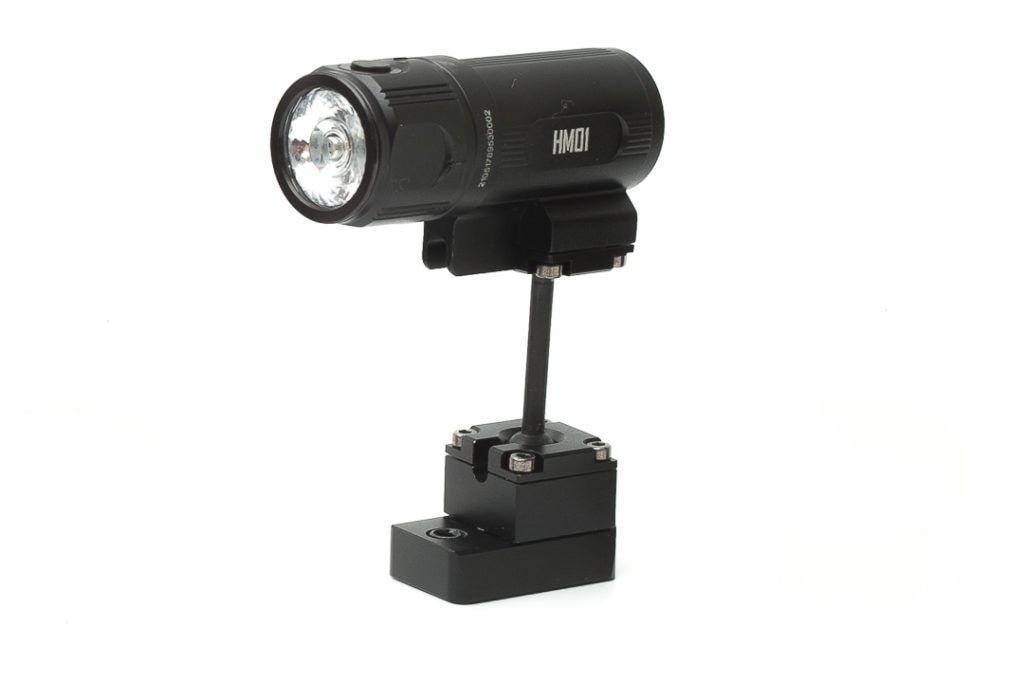
Nitecore HM01 specifications
| Brand/model | Nitecore HM01 |
|---|---|
| LED | Luminus SST20-w |
| Lumens | 320 lumens |
| Beam intensity | 1,390 cd |
| Battery config. | CR123A / 16340 |
| Material | Aluminum |
| Modes | 2 |
| Blinkies | N/A |
| Reflector | TIR |
| Waterproof | IP68 |
| Review date | June 2021 |
Introduction:
Nitecore reached out to see if we could review their new Nitecore HM01 helmet light. So I looked around and bought a cheap tactical helmet on Aliexpress. How that ended up? The cheap helmet is probably not up for the task.
The HM01 is Nitecore’s first helmet light that can produce up to 320 lumens. It’s supposed to have a simple UI, and I’m all for new and innovative designs, including simple UIs.
Package quality.
The packaging is pretty standard, but adequate. Inside the package you can find the following:
- The flashlight: Nitecore HM01
- 2 Allen wrenches
- 1 spare o-ring
- Warranty card
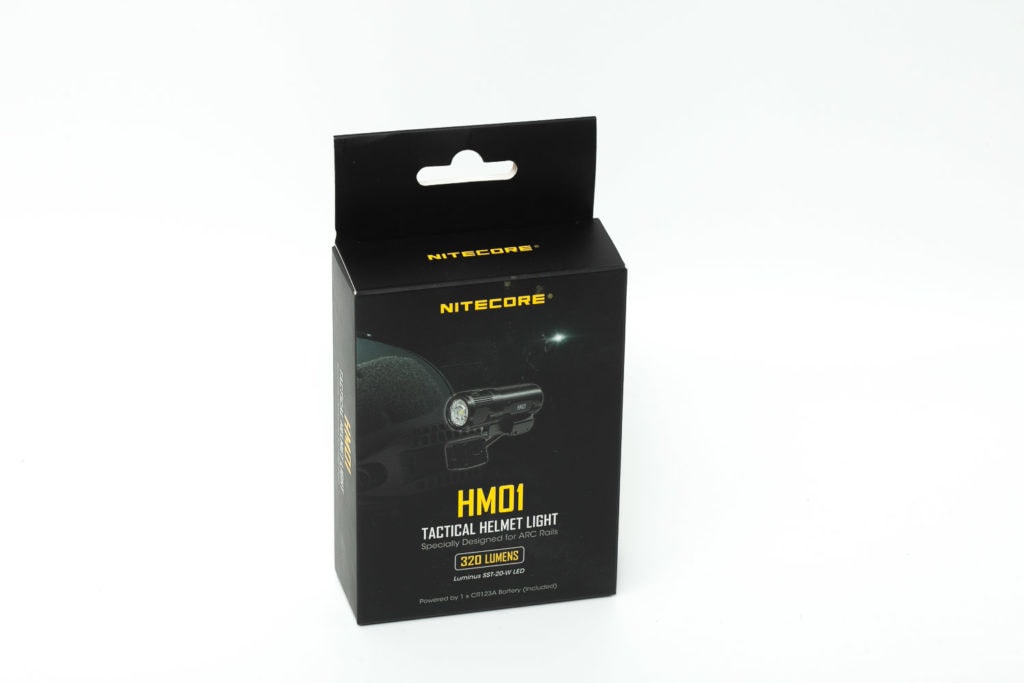
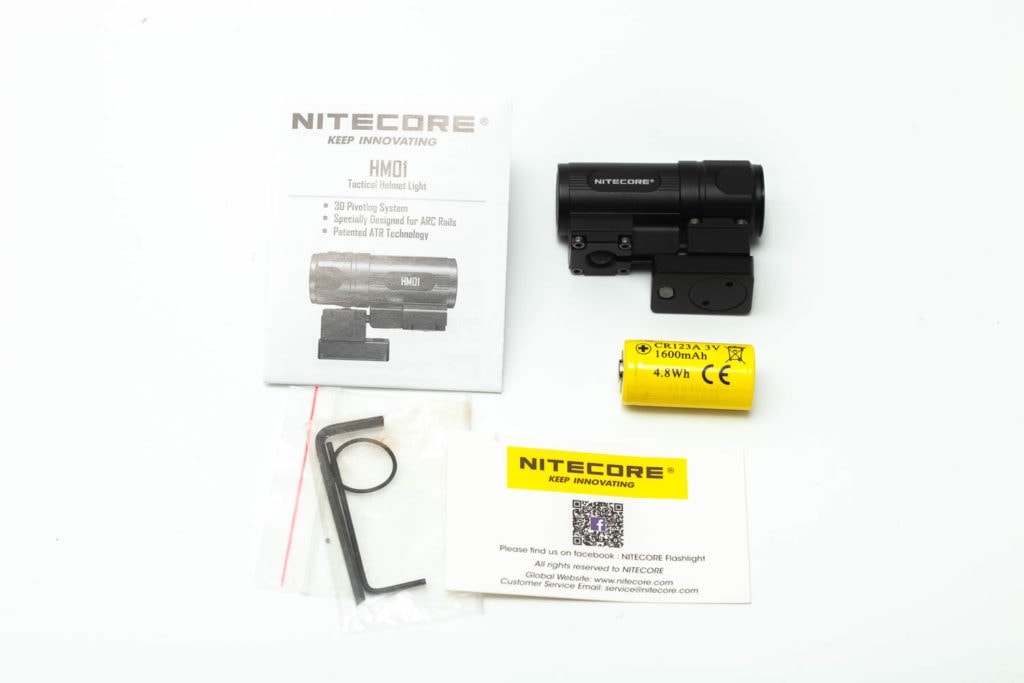
Flashlight in use
One thing you don’t have to worry about: dropping the flashlight because it’s too slippery. Why not? Because it is attached to your helmet… yeah, not funny.
I specially bought a helmet with an ARC rail to test this light, but I guess mine was a little too cheap. The rail flashlight doesn’t really fit this rail because I have to put enormous pressure to move it even a few millimeters inside the rail. My helmet is probably not the correct/official size. Not sure, though, because I only have 1 helmet.
Anyways, the flashlight itself is attached with a piece of metal to its base. The base is slid into the rail and can be anchored with an Allen screw. But since mine doesn’t get deep enough inside the rail, I can’t test this.
I’m not sure how much of an issue the following will be, but when I opened the package the first time, I found a small Allen screw in the box. At first, I thought this was a spare one, but soon noticed a screw missing on the base. On the base, as well as on the flashlight itself, there are 4 tiny Allen screws. If you screw them down tightly, the flashlight kind of gets stuck in that position. If you loosen them a little, you can freely move the flashlight in all directions. One of the screws got too loose and fell out. After screwing it back, I noticed this could become a problem. If you forget to check the screws once in a while, you might end up missing 1 or more screws. But I guess the purpose of this is to tighten it in the position you want and leave it there… not to keep changing position… I believe.. but I might be incorrect.
The switch is conveniently located. But, they could have made the switch a little larger, so you can even find it using gloves and in the dark. Right now, it’s too small IMHO.
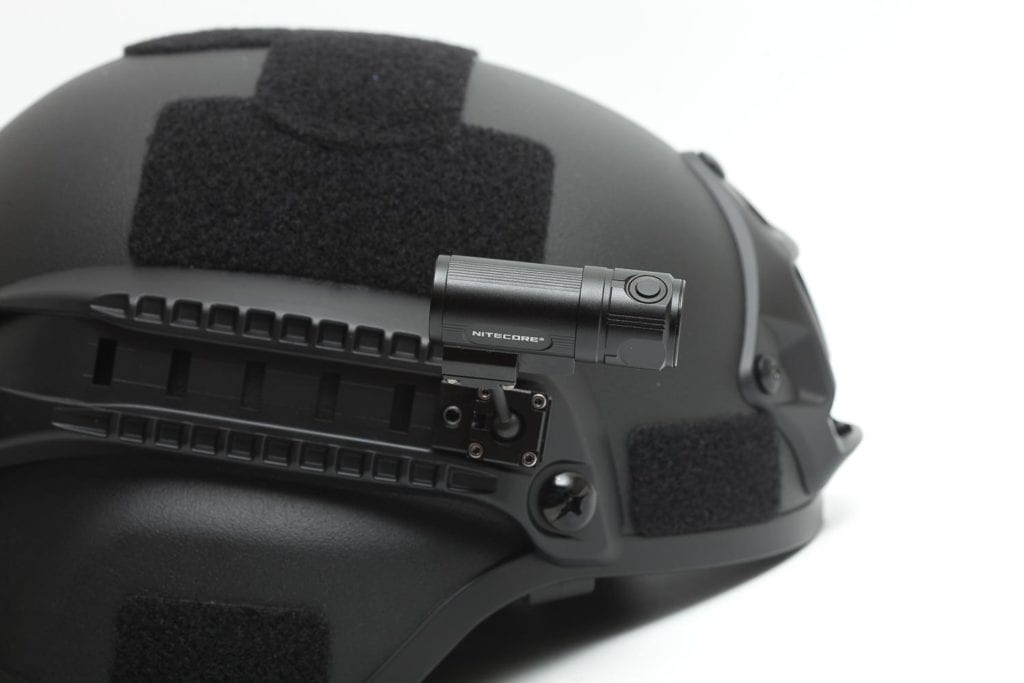
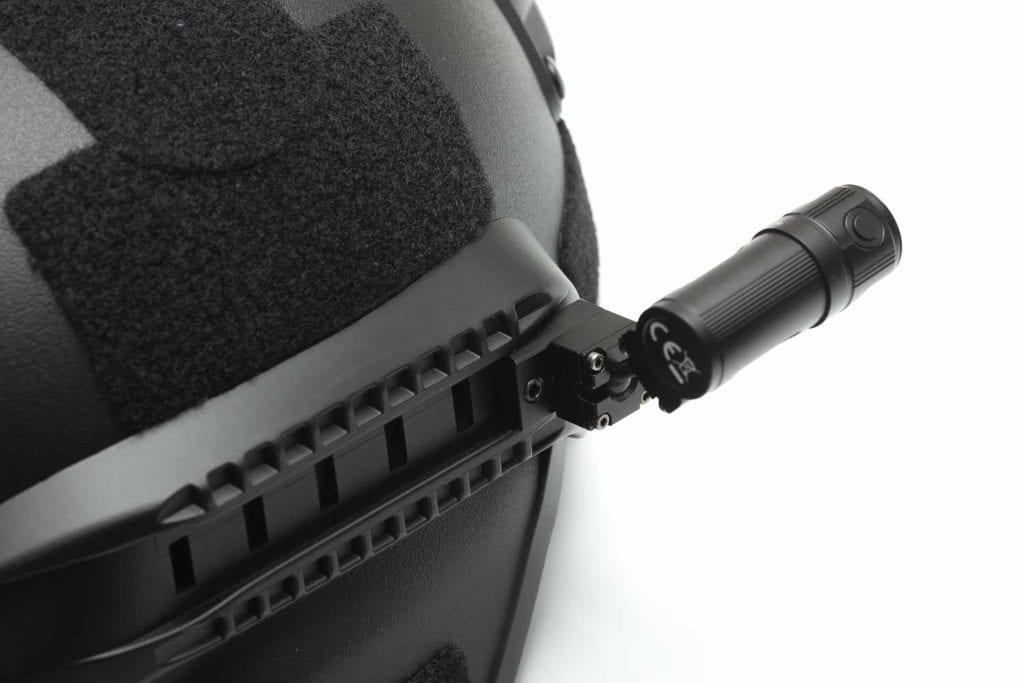
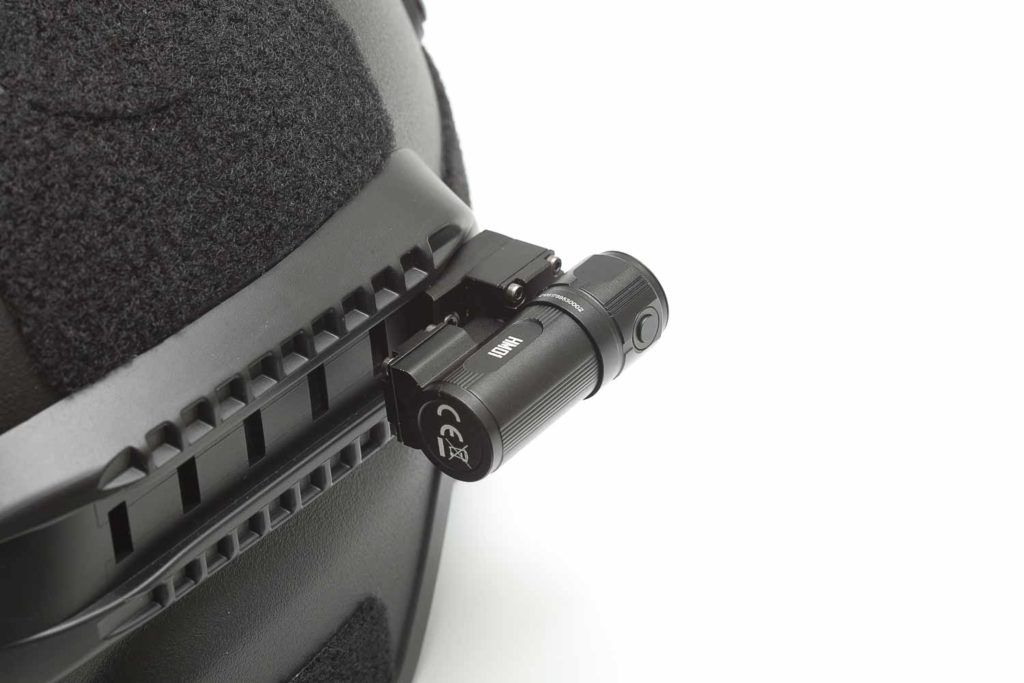
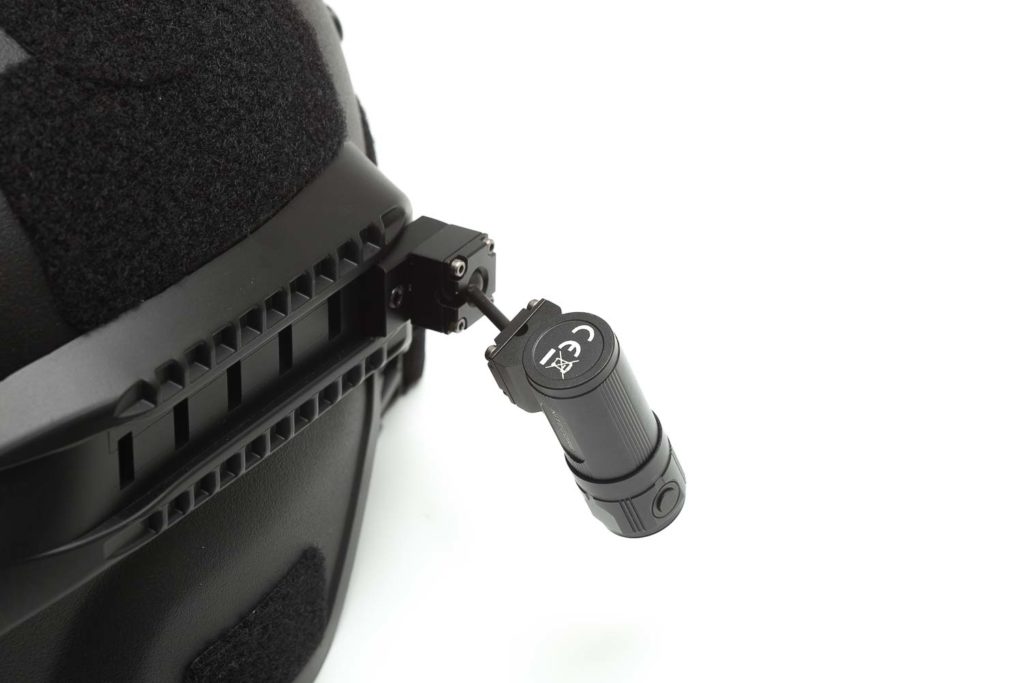
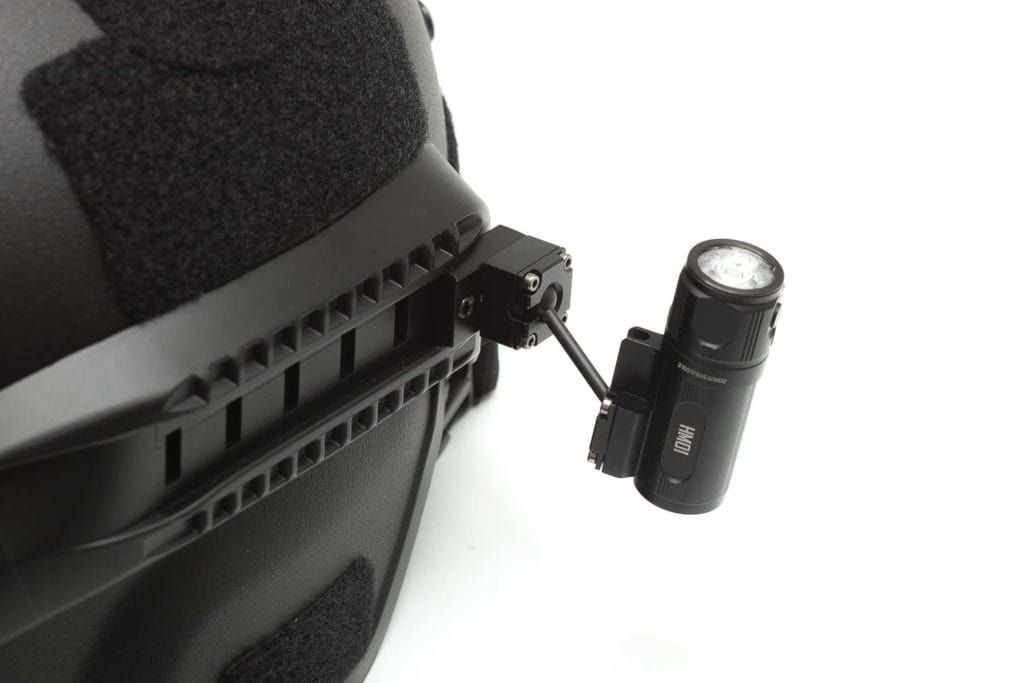
Build Quality, and Warranty
The HM01 consists of just 2 parts. Body and head. The body is attached to the base, and the head can be unscrewed to insert the battery. At the end of the threads, you can see a clear point to where the flashlight can screw down. That’s the way they position the head so the switch is located at the right spot.
Threads are bare, with a little bit of grease/lubrication.
Between the base and flashlight, is a metal bar with 2 balls on each end, working like a 3d pivoting system. This seems to be built pretty well, and can’t imagine it to break easily. There’s no other accessories included, except for a non-rechargeable CR123A battery.
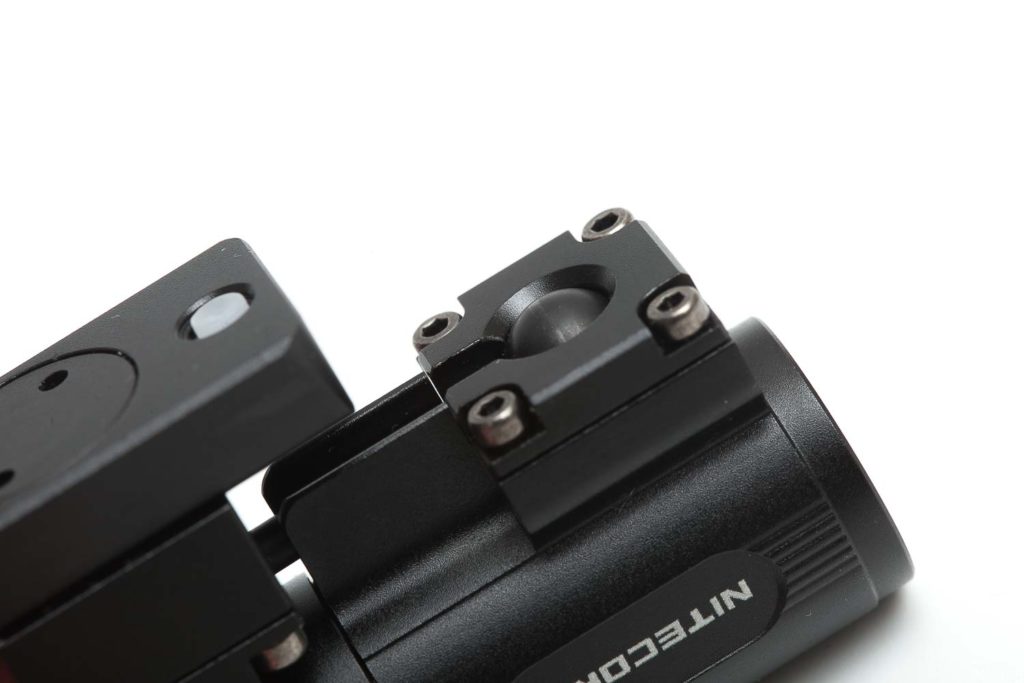
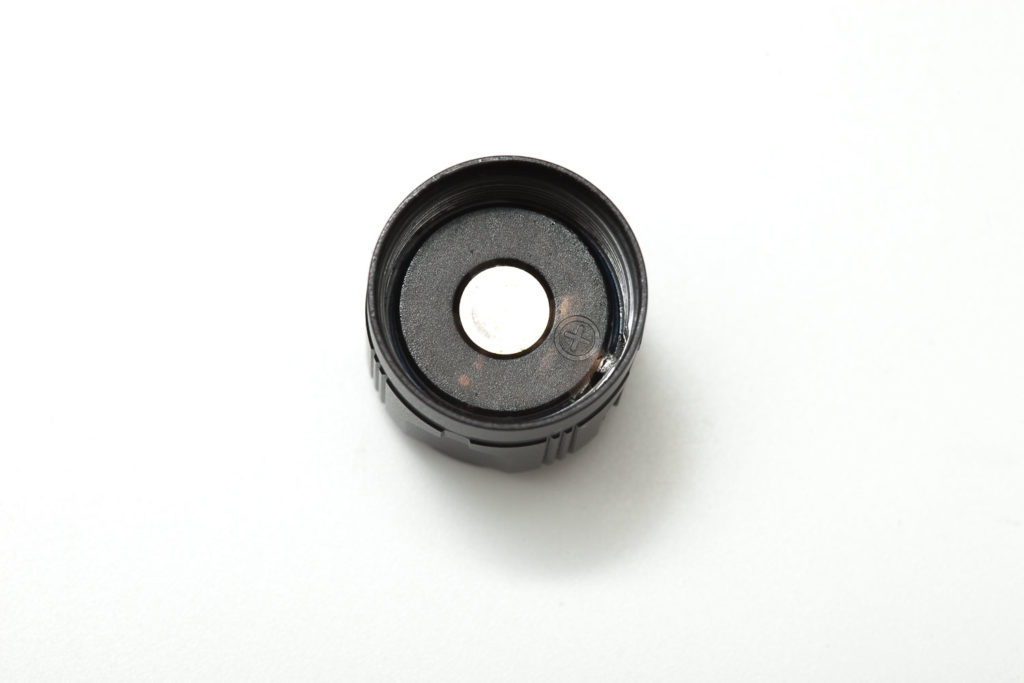
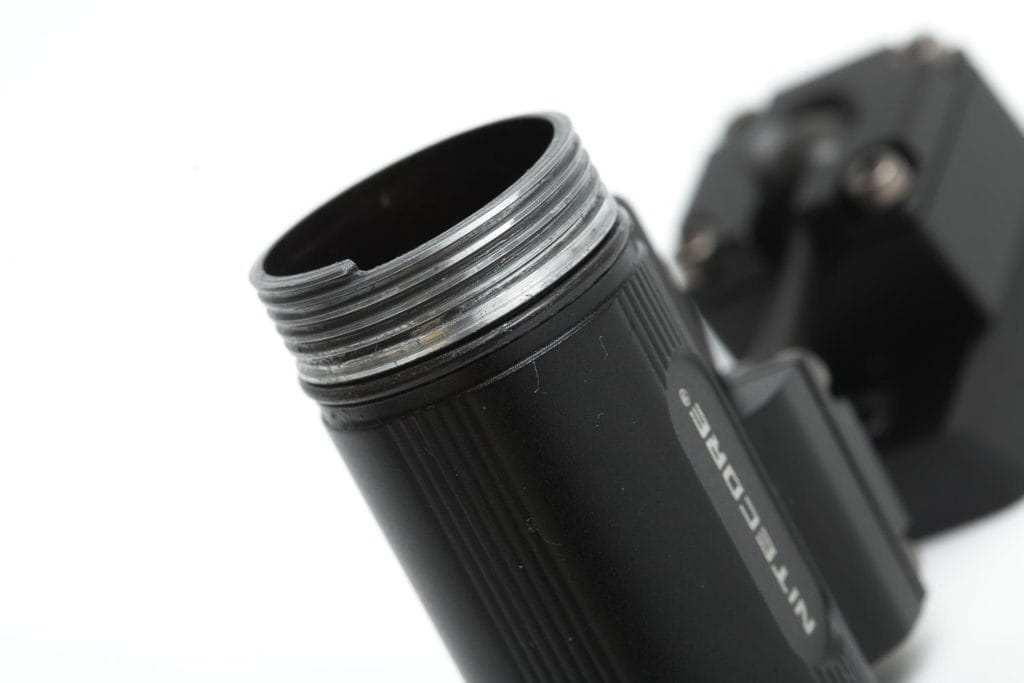
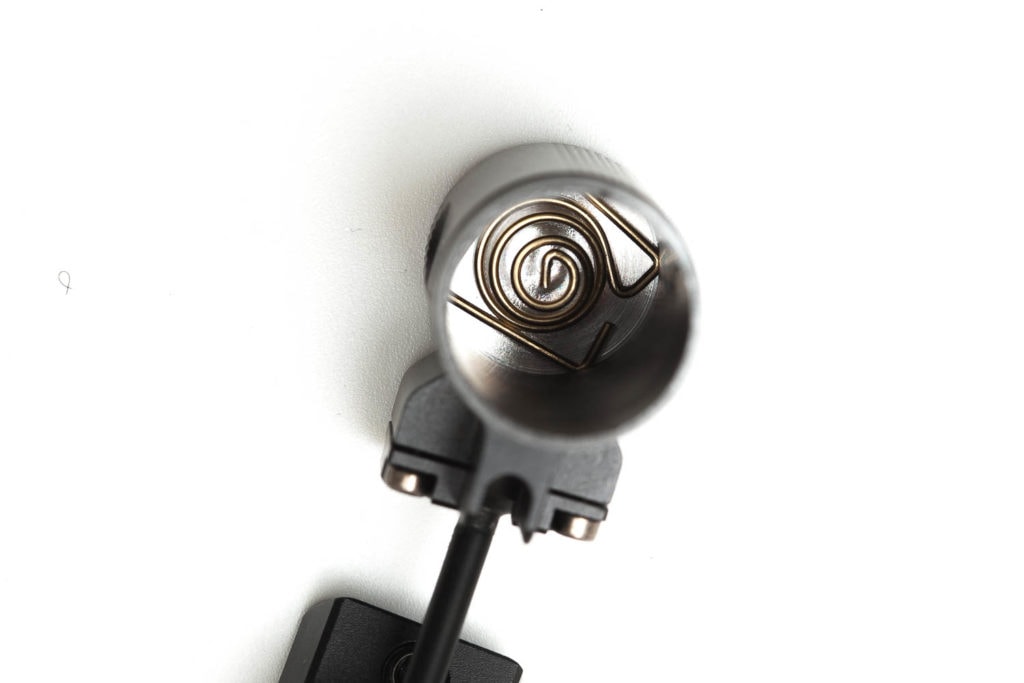
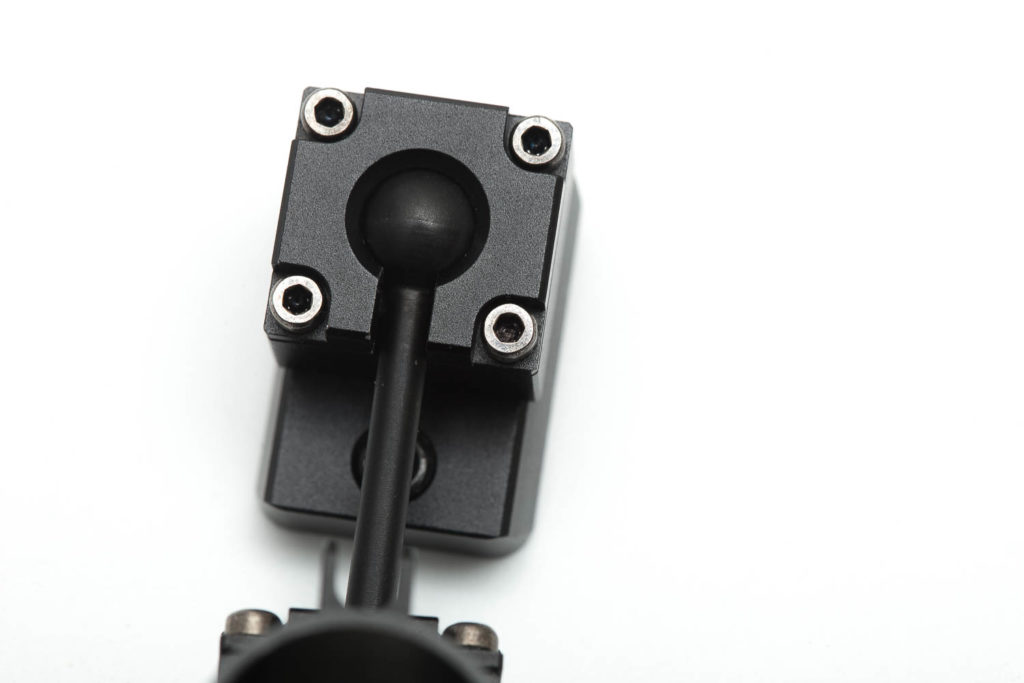
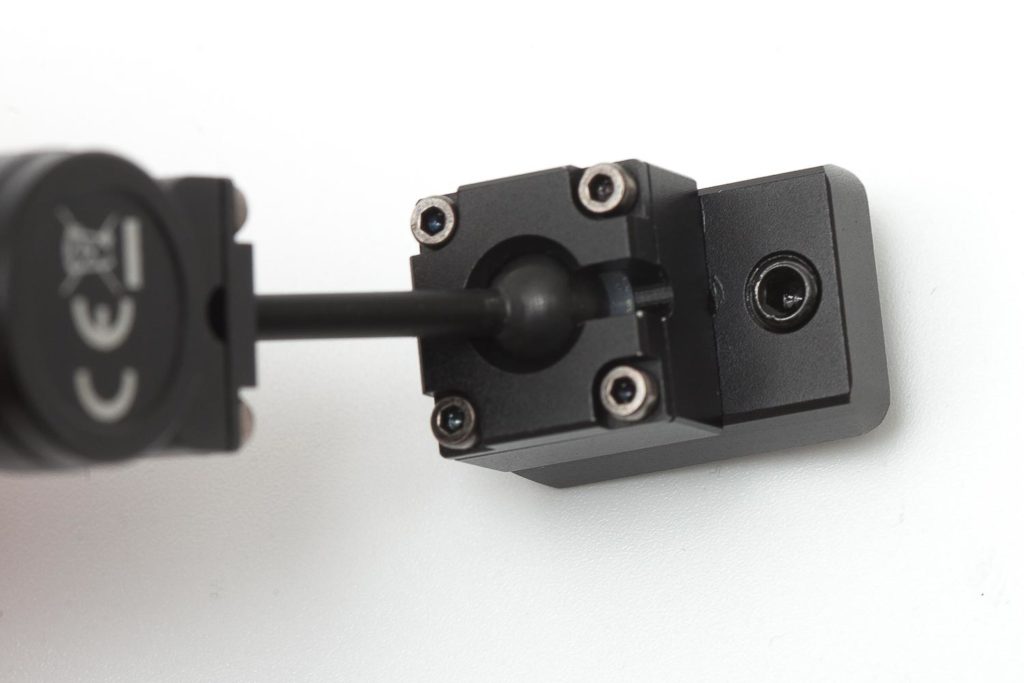
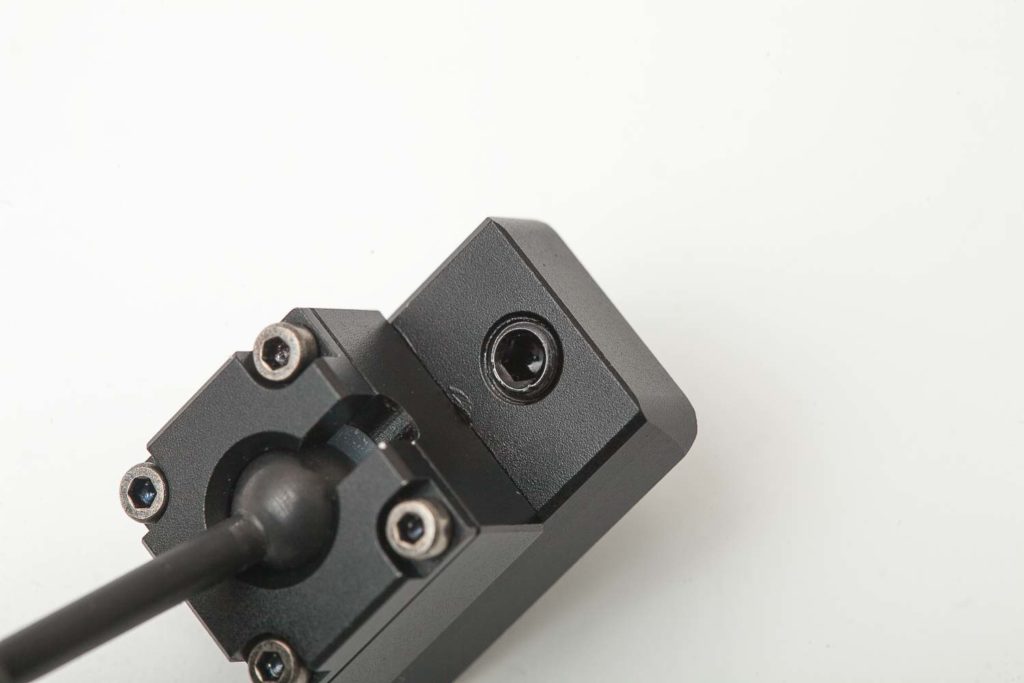
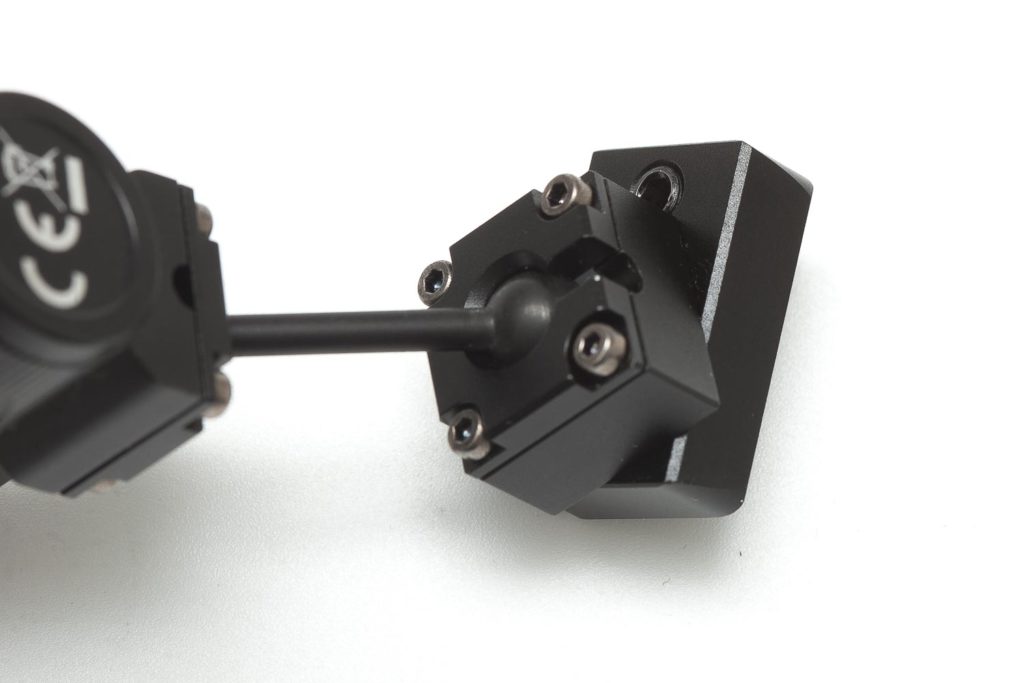
LED, Lens, Bezel, and Reflector
The Nitecore HM01 is very small, and so is the LED. The LED, according to specifications, is a Luminus SST20-W, and it doesn’t mention any color temperature. Warm LEDs usually have a more orang-ish phosphor layer, while cool LEDs tend to be more bright yellow-ish. This one is on the yellow side, so from that alone, I think it’s a cool-white LED.
Looking at the beam, there is a clear hot spot at a close distance, and enough spill. The spill does have a greenish tint though. Any rings that are present at close range, are invisible at longer range.
There’s some sort of tiny bezel, but very thin and difficult to grab.
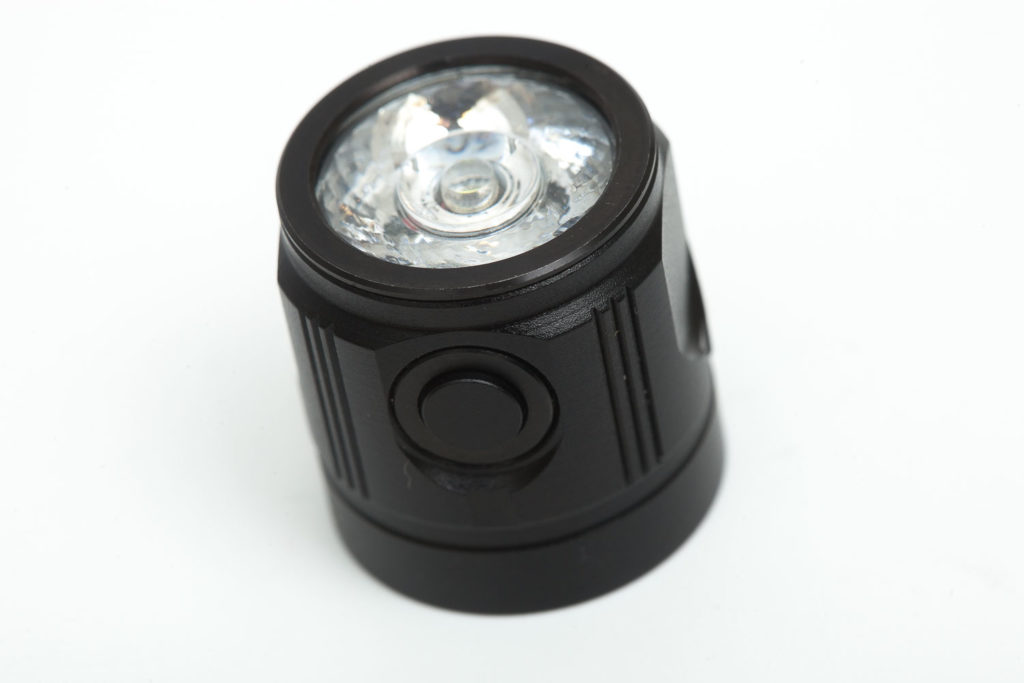
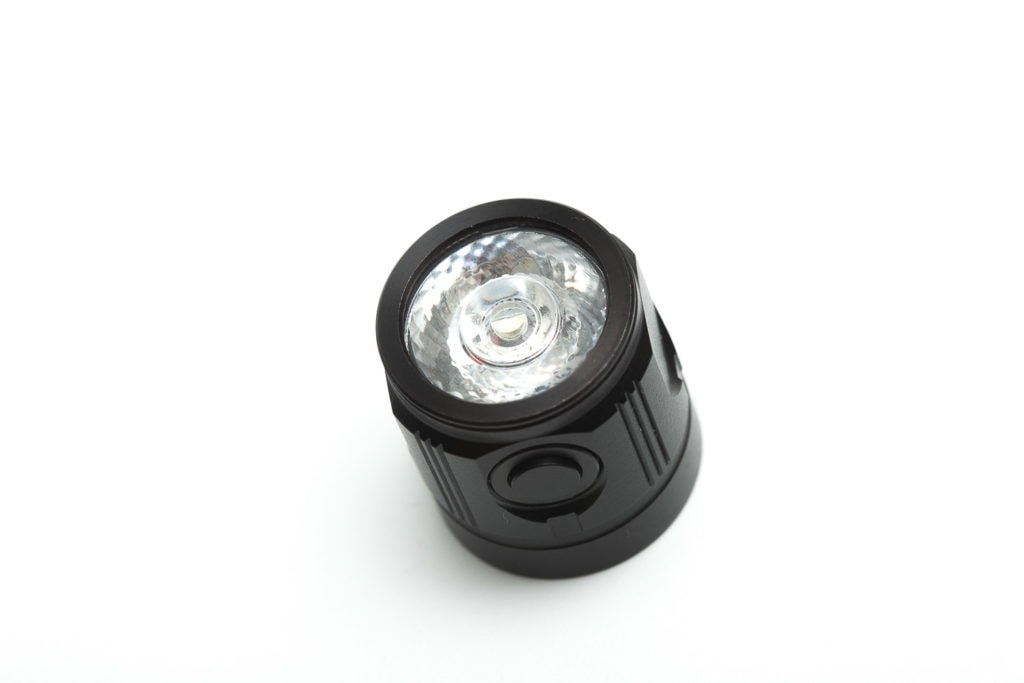
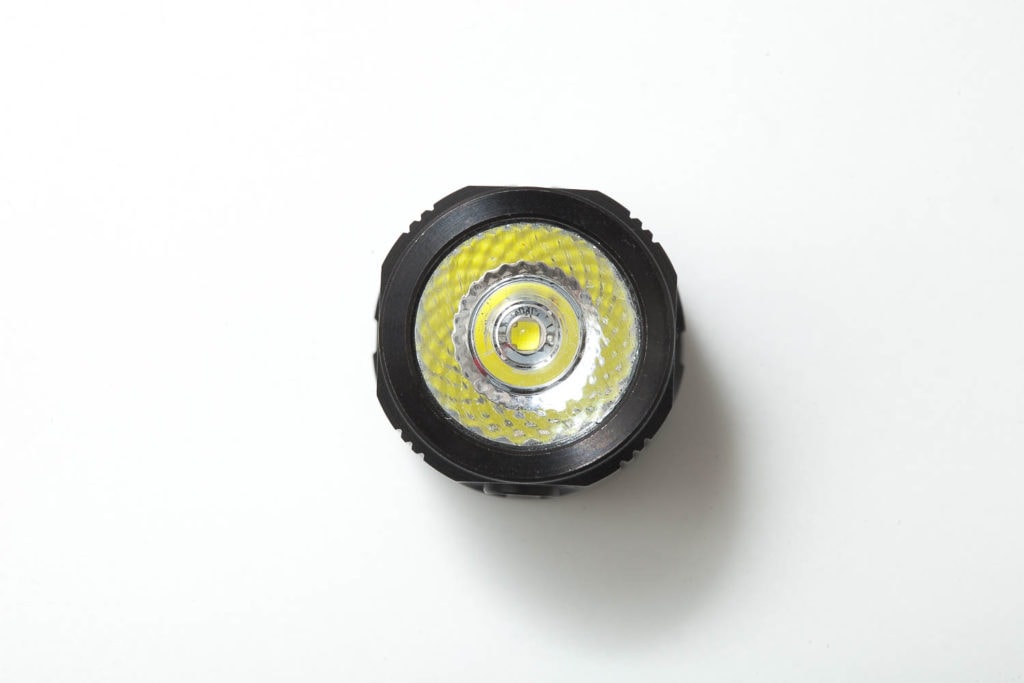
Dimensions and size comparison
- Length: 53.1 mm / 2.1″
- Head diameter: 20.9 mm / 0.8 “
Weight with base:
- Empty: 44.2 g / 1.56 oz
- With battery: 61.1 g / 2.15oz
EDC flashlight size comparison
Size compared to other flashlights, including some popular Nitecore Keychain flashlights.
From left to right: 21700 button top battery, Nitecore TUP, Nitecore Tini 2, Nitecore MH02 and Manker E03H II.

Driver & User Interface:
I’m pretty sure most people don’t expect a customizable UI on this type of flashlight, and you’re correct. The HM01 uses a very simple UI. But some people are probably disappointed when I say it’s a long-press for On and Off.
And since I’m not a regular helmet wearer, I’m not sure if a long-press is good or bad. I can only say what I personally prefer.
Available modes:
- Low High
From OFF:
- Single-click: Nothing
- 2+clicks: Nothing
- Press and hold: On
From ON:
- Single-click: switch between low and high
- Double click: nothing, just switches between the 2 modes
- Press and hold: Off
Mode memory:
- No, it will always start in Low
Blinky modes menu:
- None
Low battery warning:
- No
Lock-out mode:
- No
PWM:
- Not visible by normal use.
Batteries & Charging
According to the specifications, the Nitecore HM01 can be used with disposable CR123A batteries as well as RCR123A (rechargeable) batteries.
Nitecore added a CR123A that I thought was a rechargeable battery. So the measurements with the CR123A are done after some use, so they might not be 100% correct. I don’t know how much it influenced the measurements though.
I also asked Nitecore about the max voltage, and they said it’s fine to use 16340 batteries, which are equivalent in size. For testing, I used some older Trustfire batteries, that are protected, with button tops, and they work just fine. I tested 3 of my older 16340 batteries and use the one with the highest capacity.
There’s no built-in charge option, so you need to use disposable CR123A or charge them in your own lithium-ion charger.
Performance
Lumen measurements:
All output numbers are relative for my home-made Integrating Sphere. It is set up with an Extech SDL400 Lux Meter for measurements including a Kenko PRO1D ND-16 filter. The base measurement is done with a Convoy S2+ that has been tested at 255 lumens.
All of my readings were taken from a fully-charged, but old Trustfire 16340 as well as the included CR123A. The Trustfire battery has a capacity of just above 600mAh. Not great.
| Mode | Spec | 16340 @ 30sec | 16340 @ start | CR123A @ 30sec | CR123A @ start |
|---|---|---|---|---|---|
| Low | 35 Lumens | 38 | 38 | 37 | 37 |
| High | 320 Lumens | 361 lumens | 364 | 359 | 359 |
The CR123A battery was already slightly used, but I’m pretty sure the numbers wouldn’t be much of a difference, because the output was very stable. The 16340 battery I used is already pretty old.
Even thought the flashlight overper-formed which is a good sign. Companies that always exaggerate get also less trust, so I’m glad Nitecore was conservative with its specifications.
Runtime:
The runtime test was done with the 50cm integrating sphere, including the Kenko Pro1D ND-16 filter and Extech SDL400 data logging Lux Meter.
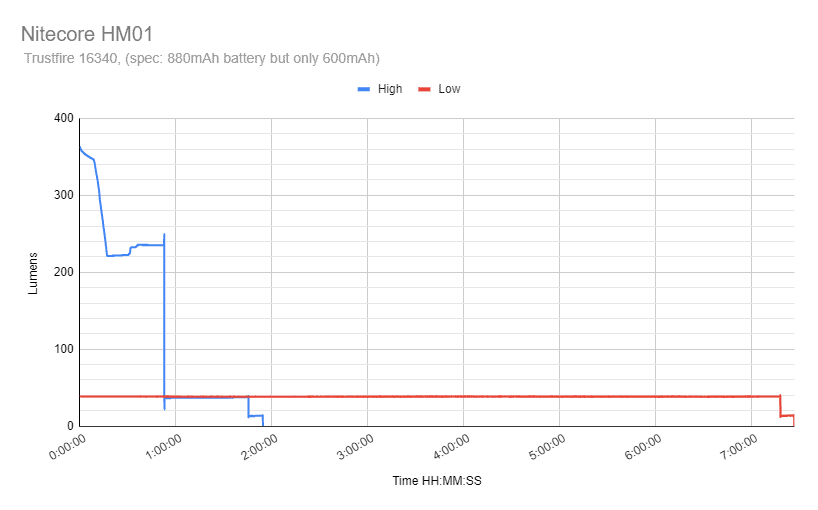
High mode starts off at around 360 lumens and slowly drops till it reaches a stable output of about 220 lumens after 20 minutes. It start to slowly increase in brightness until it drops from 235 lumend down to roughly 38 lumens. This output is maintained till the next drop around 1 hour 47 minutes. The last drop is at 1 hours and 53 minutes from around 13 lumens to 0.
Total runtime according to ANSI FL1 standards is 10% of the initial output, so that actually the drop at 1 hour and 47 minutes. In practice you actually have a few more minutes left to change batteries.
Low mode is very stable for 7 hours and 18 minutes with this low-quality Trustfire battery, when it drops to about 14-15 lumens. and then turns off at the 7 hours and 27 minutes.
Keep in mind that these runtime tests were done with a subpar, old Trustfire battery. But it’s good to see how it performs, and I’m convinced that Low mode will have a much longer runtime with new, high-quality batteries. With new, high quality batteries, you are likely going to maintain a higher output in High as well. But 16340’s aren’t widely used in flashlights, so therefore the lack of any new batteries.
Throw Measurement
Measurements were taken indoors at 5 meters with a professional Hagner E4-X Lux Meter.
| Mode | Specs | Candela | meters | yards |
|---|---|---|---|---|
| Low | 145 cd | 225 cd | 30 | 33 |
| High | 1390 cd | 2525 cd | 100 | 110 |
My measurements were quite a bit higher than Nitecore’s specs in terms of candelas. So, again that’s a positive signal to me.
Beamshots
For the following beamshots I used a Canon EOS 5D Mk2 and a 50mm lens. manual settings: ISO1600, 1/30sec , F4, 5000K





Disclaimer: This flashlight was sent to me for review at no cost by Nitecore. I have not been paid to review, nor have I been holding back on problems or defects.
Final Verdict
Pros
- Dedicated flashlight for helmets with ARC rails
- Able to focus in any direction
Cons
- Switch: Long-press for On and Off, and hard to find in the dark
Explanation on star ratings:
1: Avoid: my phone flashlight would be a better choice – 2: Poor: significant defect or issues, much better options available at the same price – 3: Average: some defects or issues – 4: Good: recommended (minor issues) – 5: Great: highly recommended

4 stars: ★★★★
I have to admit that I’m not an everyday helmet user, but it’s fun and interesting to try out multiple kinds of flashlights, including the Nitecore HM01. The output is rather low, but this is likely just used to see things nearby, and light up surroundings, while a weapon-mount-light would light up things farther away. It does what it needs to do, and especially in low-mode, the runtime is doing pretty well. Get a higher capacity battery, and you’re good for even more fun….and runtime.
Nitecore HM01 discount coupon codes
Get 15% off by using discount code 15OFF on orders above $75. Below $75, use our unique coupon code 1Lumen to get 10% off.
1lumen selects and reviews products personally. We may earn affiliate commissions through our links, which help support our testing.